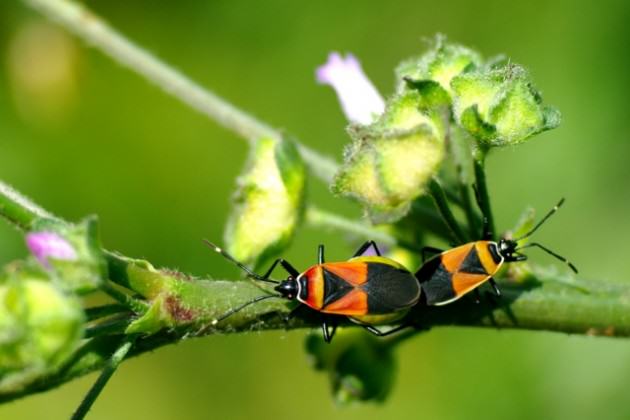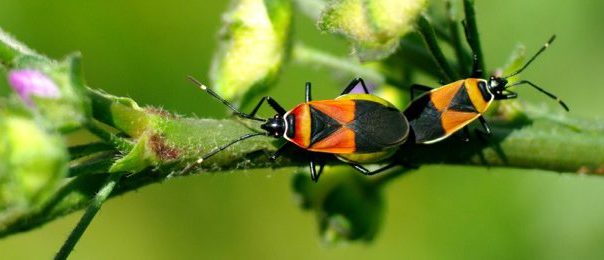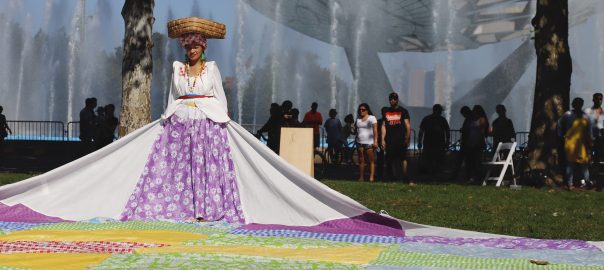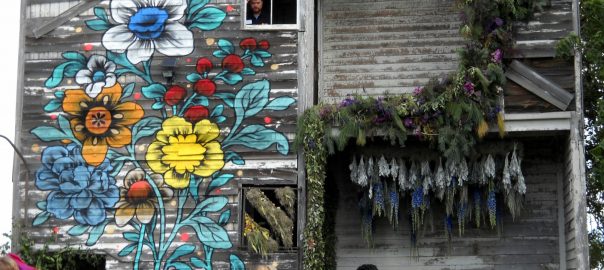Promoting urban nature is a significant challenge for local governments. As demonstrated by so many posts on this blog, it is evident that it consists of much more than simply protecting areas of high biodiversity from human activity; it is about enhancing and even creating novel forms of ‘nature’ to promote the environmental and social sustainability of cities for decades to come. Such a task is unparalleled in its complexity and requires new knowledge to be achieved. This challenge calls for a close and effective interaction between science and governance. However, all too often, the potential for collaboration between local government and academic researchers to co-produce knowledge and develop policy and programs that benefit urban nature remains unexplored. In this post, we outline some of the lessons learnt from our individual experiences working in research and government in Melbourne and provide a series of tips to help others harness the potential of local government-science partnerships.
The need for science to be applied through practice is not a new concept in the academic literature on biodiversity and conservation. Much has been written on the science-policy interface and the need for ‘actionable science’ (see McNie, 2007; Palmer, 2012). Indeed, without good research, practice can be ineffective, inappropriate and unjustified; without an understanding of practice, research can be irrelevant. However, despite the obvious benefits of interaction, the potential of collaboration between local government and academic researchers remains unexplored for many reasons. Working in an urban setting throws up many challenges to collaboration such as the requirement to interact with multiple stakeholders and communities with differing values and needs and gathering data within a variety of land tenures. However, the potential benefits of collaboration are significant.
Three models for conducting research
Broadly, there are three common ways that research on urban nature is conducted. The first is the independent model. Here, researchers typically go about generating knowledge with little to no interaction with other end user stakeholders. Research questions are developed based purely on gaps in the literature, researcher driven preference and the feasibility or ease of data collection, which often requires interaction with government concerning matters such as gaining access to sites for data collection. Once the research is completed, the priority is to publish the findings in scientific journals. There is often an optimism that the research will make its way back to practice, but this is rarely followed up. In the absence of a working relationship with researchers, practitioners also seldom track down relevant research conducted in this way because the scientific language used can be hard to understand and access to journal publications can be restricted.
The second research approach is the consulting model. In this case, researchers are commissioned by an end user such as a local council or government agency to conduct research on a particular topic, with set deliverables included in a contract. In contrast to the independent model, the needs of the agency are first and foremost, with any resulting academic publications considered an added benefit. In many cases, the commissioning agency may be attracted by the specialist expertise offered by researchers, but the typical overheads charged by research institutions can be financially prohibitive. This type of research can be affected by restricted timeframes, which can constrain the desired depth of the research on behalf of the academic. In some cases constraints placed around ownership and distribution of the resulting intellectual property by the commissioning agency can serve as a disincentive for researchers. These types of projects, such as expert reports, strategies, opportunities assessments and data collection and analysis, are therefore often undertaken by specialist environmental consulting firms.
The final approach to urban nature research is the collaborative partnership model. This consists of a close working relationship between academic researchers and the management agency that is best positioned to utilise the knowledge produced. Through ongoing dialogue, the needs of both parties are considered together in the interest of producing mutually beneficial outcomes. This is the approach that the City of Melbourne is currently pursuing and is explored in the remainder of this article.
Benefits and challenges of collaborative partnerships
Undertaking urban nature research in a collaborative partnership approach can be far more beneficial than the independent research or consulting models. Academic researchers and government professionals each have unique skills and insights that are complementary. Working together can sharpen each other’s thinking and lead to superior tangible outcomes. For example, research scientists are typically strong on tailoring research methods to specific questions to ensure data are valid and robust. Policy makers and management practitioners will often be able to provide crucial insights into the social dynamics of the area, the decision-making processes by which knowledge is applied and the communication techniques that are likely to be most effective in conveying the significance of the research to various stakeholders. The combination of these skills can help ensure that knowledge is used effectively and appropriately to formulate policy and inform action.
Another benefit of collaborative research approaches is the development of rigorous techniques to support participatory democracy. As local governments typically have a mandate to represent the voice of the community, methods from the social sciences can be used to elicit community views on particular management issues. A good example of this is public participation GIS (discussed here), which has been used in the City of Melbourne and elsewhere to both collect information about the public’s attitudes and values, and engage them directly in decision-making processes when used in public meetings and focus groups. Through applying academic theory, public engagement activities can be designed to generate deeper insights into the character of local communities than would ordinarily be gathered by councils.
By working directly with government end users, researchers can potentially tap into new sources of research funding. From a government perspective, this kind of research can be tailored directly to the local context and is more likely to be effective. A good example of this is a research project conducted in Melbourne on the effectiveness of white roofs for cooling urban environments. Instead of commissioning a review of research on this topic from other global contexts, a collaborative partnership between the University of Melbourne and the City of Melbourne led to a successful project which informed council policy and led to direct academic outputs.
There are, however, some challenges and constrains to collaborative research partnerships that can limit exploratory research. Three of the biggest are budget constraints, time frames and cultural differences. Often, the budgets of local councils are relatively inflexible and may not have the capacity to accommodate new research initiatives. Issues of timing are related to this: the development of policies or undertaking of on-ground works can be planned and completed within a few months. In contrast, research projects typically require multiple years to follow through to completion and this does not always fit neatly with the financial year calendar cycle of councils. Finally, the vastly different work priorities and operating environments can lead to a clash of cultures and misunderstandings.
Dos and don’ts of research collaboration
Below is a list of tips for both researchers and practitioners on how to pursue effective collaborative urban nature research partnerships. These have emerged from our collective experience. We do not assume to have mastered all of these, but are striving to apply them in our current and future work. We hope that these can be of use to researchers and practitioners from around the world.
Formulate questions together
The research questions shape the entire project. By developing the key research questions together, all stakeholders involved can take ownership of a project. This also allows theoretically interesting and practically important questions to be identified. Working with the community at this point is also a good way of engaging the public in the process. Recently the City of Melbourne engaged RMIT University to conduct research to understand the insect biodiversity of the city. Through continuous iterative communication, we were able to identify a series of questions that are both of relevance to the urban ecology literature and to the development of a new urban ecology strategy for the City of Melbourne.

Be opportunistic
Interesting research projects can emerge from capitalising on events and works that are being undertaken in the city. For example, the redesign of parks or the creation of new urban spaces can be viewed as experimental treatments. Such landscape manipulations would ordinarily be far too costly for researchers to undertake themselves, but careful collection of data can provide useful insights. Social engagement events such as festivals or citizen science programs can also be good opportunities undertake research to understand the attitudes of local residents.
Understand institutional culture
Differences in work culture between academia and government can strain collaborative research efforts. In the highly competitive world of academic research, producing high-quality publications is paramount. Local government practitioners can accommodate this by proactively identifying potential projects that are novel and will contribute to the scientific literature. Providing researchers with the freedom to publish results and ideas can also help foster enthusiasm for collaboration. Compared with academia, government agencies tend to prioritise tangible outcomes and high levels of public acceptability. Researchers need to understand this and invest time in communicating research findings clearly. Adapting or compartmentalising research to fit the time constraints and political priorities that face government institutions can also help collaborative projects succeed.
Be creative
Developing new ways to generate and communicate knowledge is an effective way of keeping everyone engaged and maximising the impact of research. In February of this year, a collaboration between the City of Melbourne and three Melbourne research institutions—originally initiated to promote the Melbourne chapter of the recently published Cities and Biodiversity book—led to a public forum on urban biodiversity, which was attended by 600 people. Instead of seeing the promotion of the book chapter as a stand-alone output, creative thinking and collaborative partnerships enabled it to be turned into a successful public engagement event that increased both community and media awareness of the importance and relevance of urban biodiversity.
While there are many challenges to collaborative research, we believe the benefits are significant and largely remain untapped. We encourage researchers and city practitioners to look around and explore the potential for innovative and exciting urban nature research partnerships.
The rewards personally, professionally and for the ecology of our cities are huge!
Christopher Ives and Yvonne Lynch
Melbourne
about the writer
Yvonne Lynch
Yvonne is an Urban Greening & Climate Resilience Strategist who works with Royal Commission for Riyadh City.
References







Leave a Reply